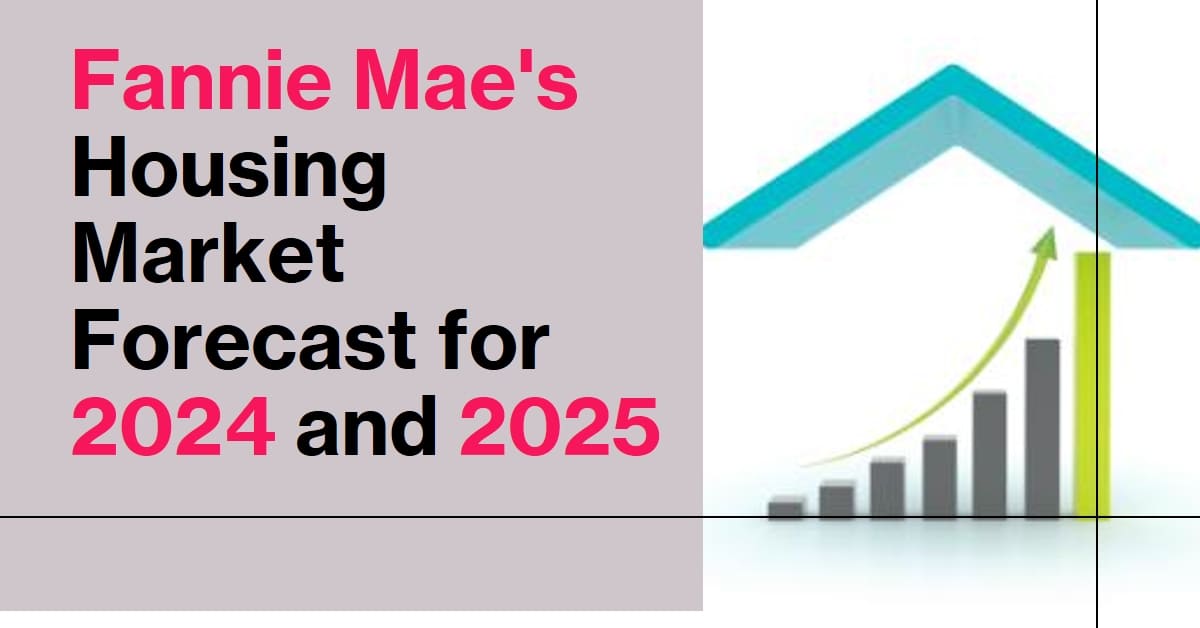Fannie Mae has revised its forecast for 2024. In the wake of turbulent oscillations and a deviation from historical norms, the housing and mortgage markets are anticipated to revert to a more typical pattern in 2024. The volatility in mortgage rates and lingering effects of the pandemic resulted in an unusual juxtaposition in 2023: the lowest pace of existing home sales since the Great Financial Crisis, depressed mortgage originations, yet robust new home construction and solid home price growth.
Several dynamics prevalent in 2023, including stretched affordability, the “lock-in effect,” and limited supply, are expected to persist into 2024. However, the projection indicates that moderating mortgage rates, a decelerating economy, and diminishing effects from the 2020-21 period's surge in home purchase activity will lead to a thawing of the existing homes market.
This, in turn, is anticipated to prompt a shift towards a more balanced housing market. The forecast suggests a recovery in existing home sales, moderated home price growth, and a stabilized level of new home construction. Growth in mortgage originations is also expected, with a total single-family mortgage originations forecast of $1.98 trillion in 2024 and $2.44 trillion in 2025, marking an increase from $1.50 trillion in 2023.
Despite the recent easing in financial conditions, the macroeconomic backdrop still indicates below-trend growth and a heightened level of uncertainty. Notably, the expectation of a 2024 recession has been removed from the baseline forecast, reflecting a more optimistic outlook.
Table of Contents
Forecast Shows Moderation in Home Price Growth in 2024
As per the Fannie Mae Home Price Index, home prices concluded 2023 with a 7.1 percent increase on a Q4/Q4 basis. This robust pace of growth, amid rising mortgage rates and worsening affordability conditions, is noteworthy. While the moderation in mortgage rates is anticipated to support home prices, historical challenges in affordability are expected to persist. Coupled with a cooling labor market, the ability of homebuyers to drive prices upward is foreseen to be more limited.
The anticipated unfreezing of the existing home sales market and an increase in the supply of new homes are expected to alleviate market pressures. A potential decline in multifamily rents across the country is also likely to make renting multifamily units more favorable, thereby reducing the upward pressure on single-family home prices.
Thawing of the Existing Home Sales Market
Despite expected stretched affordability and a tight supply of homes for sale, a decline in mortgage rates is predicted to initiate the thawing of the existing home sales market. This market was hindered in 2023 by strong lock-in effects. The trend of homebuyers and sellers in 2020 and 2021 advancing their moving plans to capitalize on low mortgage rates and remote working options is expected to diminish over time. As this effect wanes, coupled with existing homeowners who delayed moves in 2023 due to high mortgage rates, an increase in home sales is anticipated.
While a sluggish pace of existing home sales is still foreseen due to affordability challenges and limited supply, successive quarterly sales increases are projected in 2024. Sales are expected to conclude the year around 4.5 million annualized units in Q4, compared to the year low of around 3.8 million annualized units in Q4 2023. The annual forecast indicates a 3.1 percent rise in existing sales for 2024.
Single-Family Home Construction Strengthens, Multifamily Takes a Pause
The resilience of single-family home construction throughout much of 2023 surpassed expectations. While the unfreezing of the existing sales market is expected to bring balance to homebuyer interest in both new and existing homes, the overall housing stock remains limited compared to historical demographic trends. This limitation stems from a decade of underbuilding following the financial crisis. The peak first-time homebuying age for Millennials also continues for a few more years, contributing to sustained demand.
Recent data on residential housing construction employment indicates an expanding homebuilding industry. Consequently, the projection is for new construction to maintain its strength, with a forecast indicating that 2024 single-family housing starts will be 5.7 percent higher than those in 2023.
In contrast, the slowdown observed in multifamily construction in 2023 is anticipated to persist into 2024. Weak rent growth, influenced by a historically high influx of new supply into the market, is a key factor. Despite the overall scarcity of housing supply, 2024 is projected to be a breather following the rapid pace of starts in 2022. The forecast for the year indicates a significant decline, with multifamily housing starts expected to fall by 18.3 percent in 2024.
Insights into Homebuying Demographics and Industry Expansion
Millennials, a significant cohort in the homebuying demographic, continue to be at the peak first-time homebuying age. This demographic trend, combined with sustained underbuilding over the past decade, contributes to the persistent demand for single-family homes.
Moreover, recent data on residential housing construction employment indicates a positive trend in the homebuilding industry. The expansion in employment within this sector reinforces the expectation of a robust single-family home construction market in 2024.
Challenges in Multifamily Construction and Rent Dynamics
The multifamily housing sector faces challenges, with a slowdown in construction expected to extend into 2024. Weak rent growth, attributed to a substantial influx of new supply, is a contributing factor. Although the overall housing supply remains insufficient, the forecast suggests a temporary slowdown in multifamily housing starts during 2024.
While a breather is expected in 2024, the long-term outlook for multifamily construction remains positive over the next five years. The ongoing scarcity of housing supply is likely to drive solid multifamily construction beyond 2024.
In summary, the housing market in 2024 presents a nuanced landscape, with single-family home construction maintaining strength, driven by demographic trends and industry expansion, while multifamily construction takes a brief pause, responding to rent dynamics and the recent surge in supply.




